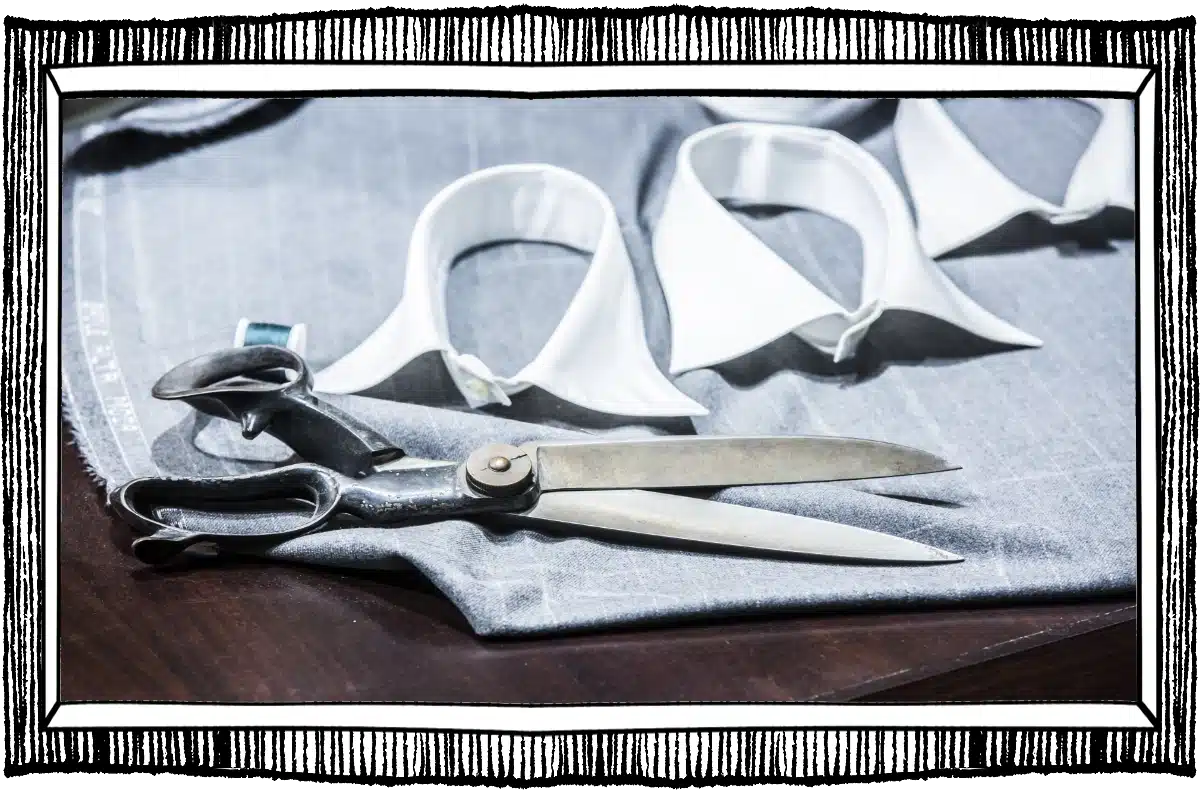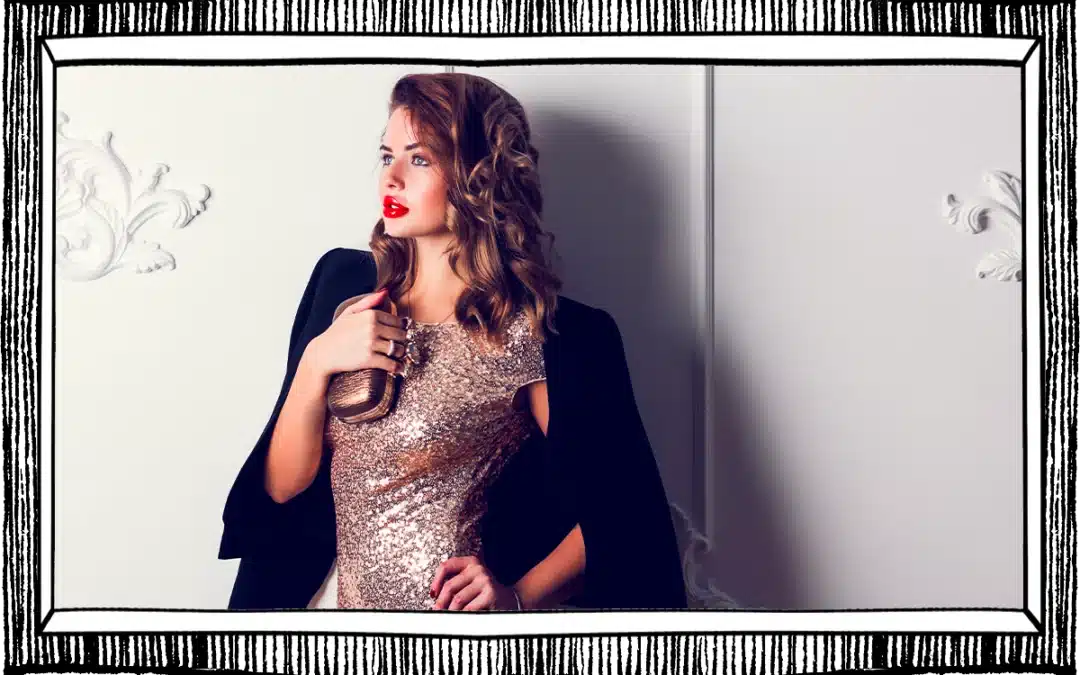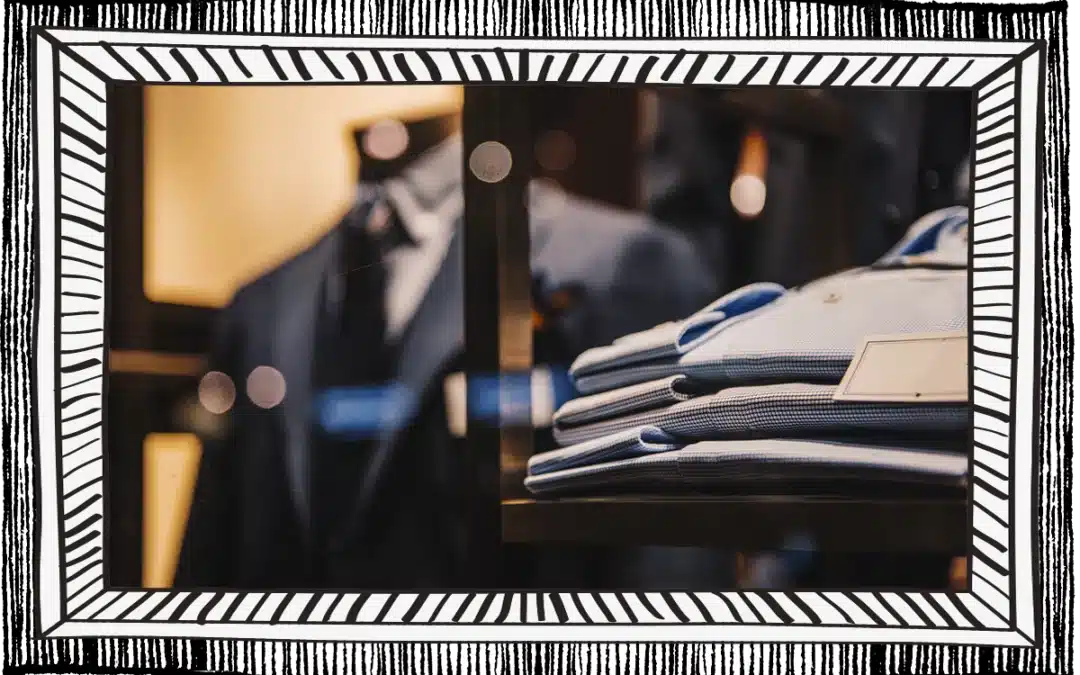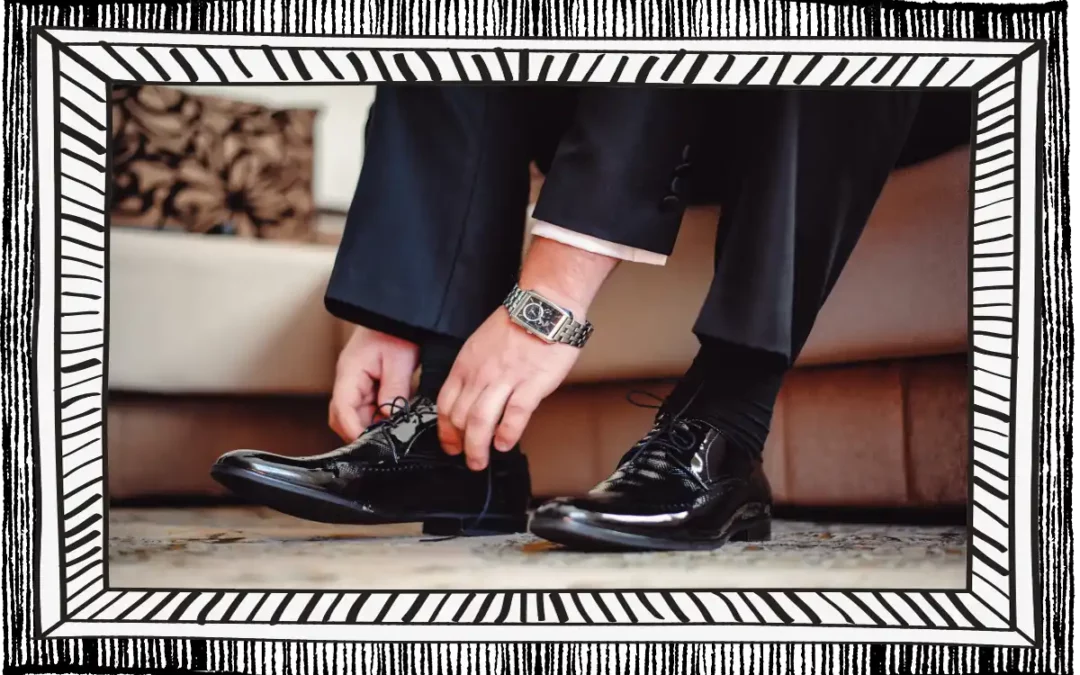Whether you’re an ectomorph, endomorph or mesomorph, here are three good reasons to have your first made-to-measure shirt made. Take these body types and add an infinite combination of sizes, one for each individual, and it’s easy to see why you’ll never find an off-the-peg “made-to-measure shirt”.
Sleeves that are too short, collars that are too wide, waists that are too small – these are the symptoms of straitjacket fashion.
You deserve better, all the more since the prices for premium quality that lasts remarkably well are affordable.
The three purposes of the made-to-measure shirt
The first question a tailor will ask you is when and where you’re going to wear the garment. For each one, there are codes: governing the choice of fabric, the cut and the finish. You can tell the quality of a made-to-measure shirt by the number of stitches per centimetre (the absolute minimum is 6 stitches per cm) and the finishing details: tabs, facings and buttonholes.
Made-to-measure business shirts
The business shirt has its own characteristics. And you’ll see that certain accessories are making a comeback for male office workers.
- Fabric: the ideal fabric is easy care and crease resistant. Cotton seems to be the best alternative. Poplin, with its very tight weave, allows the use of fine, luxurious cottons such as Egyptian cotton. It’s the most pleasant to wear. But poplin is worn in winter. Shirts made from end-on-end fabric look similar to poplin, but are more lightweight, and therefore recommended for hot weather. Opt for a fitted or straightcut, to be worn under a suit jacket, tucking into trousers easily without creasing.
- Colours and patterns: block colours and pale colours are the order of the day, but you can of course wear shirts with thin stripes.
- The collar: a business shirt must allow you to wear a tie. Here are a few recommended collars: the Italian collar, the English collar (the “tab collar”, which must worn with a tie), the American collar and the classic collar. Mix up the shapes with tips that are pointedor rounded.
- The cuffs: matching your cuffs to your collar is a must. For example, with those Neapolitan cuffs, wear a Neapolitan collar. It’s something that connaisseurs notice. Musketeer cuffs allow you to wear cufflinks. Team a pointed collar with square cuffs and rounded points with round cuffs.
- Accessories: the tie is the part of your outfit that will be noticed first. The colours should match both the shirt and the suit. Silk is an excellent choice to wear with your business shirt. A tie pin will top off the look of the tie. Last but not least, sleeve garters are making a comeback. These are elasticated bands placed above the elbow that raise the shirt sleeve slightly to prevent it from rubbing when typing on the computer.
The smart made-to-measure shirt
Galas, weddings, cocktail parties – these are stand-out occasions that don’t come along every day. The made-to-measure shirt and its one-of-a-kind nature bring with them the touch that hosts of a unique event are looking for. Out come the suits and tuxedos.
- The fabric: Silk cotton or Egyptian cotton poplin is perfectly suited to a formal reception. You’re abiding by the dress code. The musketeer cut keeps you from committing a faux pas.
- Colours and patterns: white is generally the order of the day, but again, it’s a question of dress code.
- The collar: the musketeer collar is perfect for wearing with a tie or a bow tie. The broken collar is only for wearing with bow ties.
- The cuffs: cufflinks or musketeer cuffs are those that accommodate cufflinks.
- Accessories: Cufflinks, bow ties, tailcoats and, very much in fashion with the bride and groom, braces for a dandyesque look.
The casual made-to-measure shirt
It’s the perfect alternative to the polo shirt. It will take you anywhere – off on holiday, to the clubhouse or out to dinner. You’re always ready for anything.
- Fabrics: Oxford cloth is particularly suitable for a relaxed made-to-measure shirt, as it is has thick weave that gives it a sporty allure. Denim is perfect, with its jeans-like look. Chambray is worn loose, or as an overshirt, with an open shirt collar worn over a t-shirt. Zephyr, a very thin fabric, is worn in summer, like linen. An ample cut is not a faux pas.
- Colours and patterns: anything goes, it’s all a question of style. Flower power shirts with big patterns are making a big comeback. Prints are on trend, all the more so if they are hand-painted by artists. The checked lumberjack shirt is still a casual classic. Oxford herringbone cloth is suitable. The colours that warm up your complexion are perhaps the only limit to an otherwise infinite colour palette.
- The collar: an open American collar, or a colonel collar, which is worn without a tie. The Mao collar is always distinctive. Polo or Lucknow collars definitely give a shirt a relaxed look.
- The cuffs: at the good taste end of the spectrum, you have the pick of a mini cuff or simply a square cuff.
- Accessories: none… Minimalism is the order of the day.
Further reading: “Women’s suits: From made-to-measure to bespoke tailoring in Paris“
Made-to-measure tailoring is on the rise, not least on the internet. You can now send in your measurements and order a garment online. However, this is not bespoke nor the art of bespoke tailoring. A made-to-measure shirt is not in any collection, and you won’t find it in a shop. It’s a creation, a unique garment that will come into being in a workshop in the hands of a master tailor.
Taking measurements: the standards for the crafting of a made-to-measure shirt
The quality of a made-to-measure garment depends on the tailor, the fabric, the finishings and the number of measurements taken. These days, some brands (Les Nouveaux Ateliers, for example) have a scanner that plots your body shape in 3D and also allows you to see how a cut will look on your digital twin before it is crafted. In the case of a shirt, and in the traditional way as at Charvet for example, it is the tailor who holds the key to your pattern.
The essential measurements are:
- Neck circumference
- Chest circumference with the tape measure under the armpits
- The circumference of the midsection level with the belly button
- The circumference of the hips at their widest point
- The length of the back
- The length of the sleeve from the end of the shoulder to the thumb
- Wrist circumference
- Bicep circumference
- Shoulder breadth: from the point of the left shoulder to the point of the right shoulder.
For complete satisfaction, opt for high quality
The customisation of the details is the height of refinement and shows, if there were any doubt, that the shirt you’re wearing was made just for you. Go for tailoring from design through to crafting!




